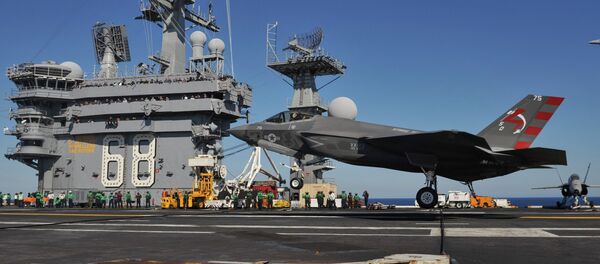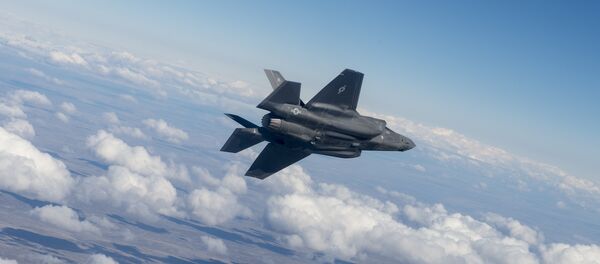Earlier, the National Interest magazine published an article by defense expert Kris Osborn titled "Get Ready, Russia and China: America's Aircraft Carriers Will Have Stealth Fighters Next Year."
In the article, the author claimed that "the emergence of a first-of-its kind carrier-launched stealth fighter is intended to give the [US] Navy more combat attack flexibility and attack sophisticated enemy air defenses or fortified targets from a sea-based carrier."
AIRCRAFT CARRIER
— World Air Photo (@planenut27) 1 декабря 2016 г.
F-35C Lightning II carrier variants, assigned to the Salty Dogs of VX 23, prepare to take off from the flight deck. pic.twitter.com/jXEDNCKZJ1
Touching upon the issue, Vasily Kashin said that "to track down and destroy the US aircraft carrier combat groups, the Chinese will mainly rely on a combination of ballistic anti-ship missiles, submarines and land-based attack aircraft equipped with anti-ship missiles."
In addition, China is increasing investments in the development of large "strategic" reconnaissance drones resembling the US-made Global Hawk, as well as maritime reconnaissance satellites, according to Kashin.
He recalled that the Chinese J-20 fifth generation fighters are significantly larger and heavier than the F-35, which is why they are primarily designed for performing over-the-sea missions as attack aircraft carrying anti-ship missiles.
Kashin went on to say that the US aircraft carrier battle groups with the F-35C fighters on board will face the threat emanating from the anti-ballistic missiles, the long-range H-6K bombers with heavy anti-ship cruise missiles, as well as the J-20-like stealth attack aircraft and supersonic anti-ship missiles launched from Chinese submarines.
"When the F-35 was being developed, the task of providing an aircraft carrier strike group with air defense was not a priority for this fighter jet which was primarily designed for destroying coastal targets. As a result, this warplane looks like an aircraft which is not suited for today's possible combat realities the US may face in the Western Pacific," Kashin said.
In this vein, the F-35 will have to deal with enemy fighters which will be equipped with powerful radars, long-range stealth "air-to-air" missiles, and which will be superior to the F-35 in terms of armament, speed, maneuverability and range, according to him.
The F-35 will have to prevent massive missile strikes and carry out permanent patrolling for air defense purposes. Also, the F-35 should itself act as a powerful anti-ship missile launching vehicle, something that may lead to increasing the combat load for the plane," Kashin added.
Touting the F-35 as "an undoubtedly perfect and revolutionary aircraft", Kashin at the same time pointed out that "it was created in line with deeply erroneous strategic views of the 1990s which claimed that the US superiority at sea and in the air is guaranteed under all conditions."
The F-35 project, beleaguered from its inception, is expected to cost up to $1.5 trillion over the next 55 years, making it the most expensive defense program in history.
According to a memo from Michael Gilmore, the US Defense Department's director of operational testing and evaluation, while the warplane's development phase is scheduled to officially end in 2018, the F-35 program is at "substantial risk" of not meeting the requirements.



